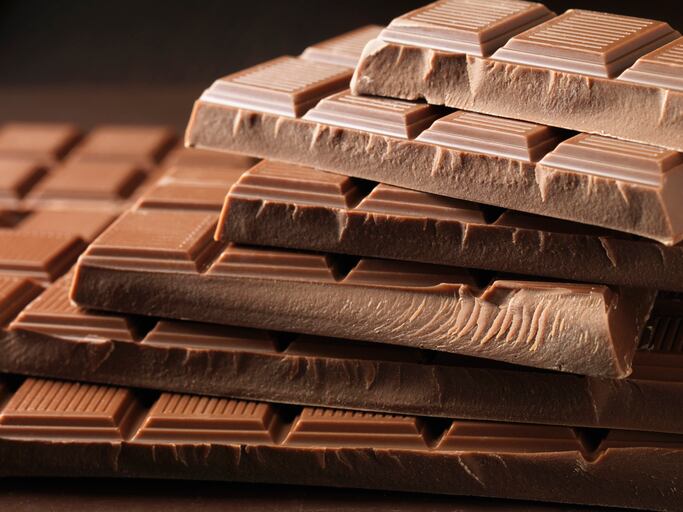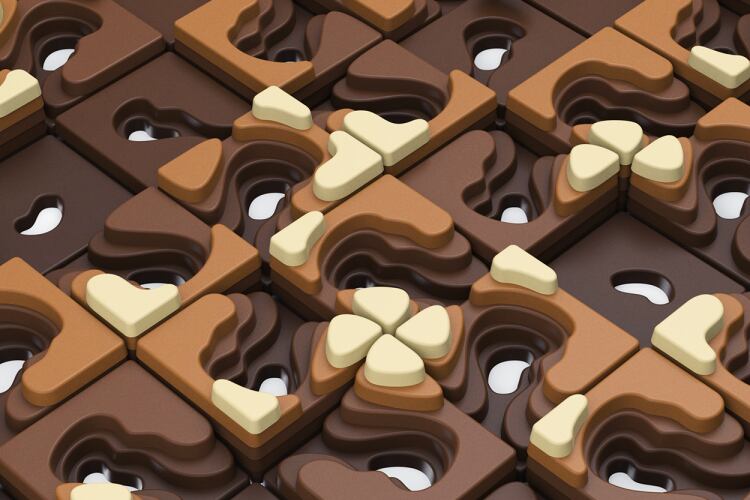Academics at the University of Leeds set out to uncover what makes chocolate so appealing to consumers. To do this, they decoded the physical process that takes place in the mouth when a piece of chocolate is eaten, as it changes from a solid into a smooth emulsion.
When chocolate is in contact with the tongue, it releases a fatty film that coats the tongue and other surfaces in the mouth, the research team found. It is this fatty film that makes the chocolate feel smooth throughout the entire time it is in the mouth, making chocolate's texture so irresistible.
When it is in the mouth, they said, the chocolate sensation arises from the way the chocolate is lubricated, either from ingredients in the chocolate itself or from saliva or a combination of the two.
Fat plays a key function almost immediately when a piece of chocolate is in contact with the tongue, according to the researches. After that, solid cocoa particles are released and they become important in terms of the tactile sensation, so fat deeper inside the chocolate plays a rather limited role.
This opens the door to reformulation possibilities, if chocolate can be designed to be healthier while also retaining the indulgence that shoppers crave.
“Lubrication science gives mechanistic insights into how food actually feels in the mouth. You can use that knowledge to design food with better taste, texture or health benefits,” said Anwesha Sarkar, Professor of Colloids and Surfaces in the School of Food Science and Nutrition at Leeds.
“If a chocolate has 5% fat or 50% fat it will still form droplets in the mouth and that gives you the chocolate sensation. However, it is the location of the fat in the make-up of the chocolate which matters in each stage of lubrication, and that has been rarely researched.
“We are showing that the fat layer needs to be on the outer layer of the chocolate, this matters the most, followed by effective coating of the cocoa particles by fat, these help to make chocolate feel so good.”
The study - published in the scientific journal ACS Applied Materials and Interface - did not investigate the question of how chocolate tastes. Instead, the investigation focused on its feel and texture.
Tests were conducted using a luxury brand of dark chocolate on an artificial 3D tongue-like surface that was designed at the University of Leeds.
Dr Siavash Soltanahmadi, from the School of Food Science and Nutrition at Leeds and the lead researcher in the study, said: “With the understanding of the physical mechanisms that happen as people eat chocolate, we believe that a next generation of chocolate can be developed that offers the feel and sensation of high-fat chocolate yet is a healthier choice.
“Our research opens the possibility that manufacturers can intelligently design dark chocolate to reduce the overall fat content.
“We believe dark chocolate can be produced in a gradient-layered architecture with fat covering the surface of chocolates and particles to offer the sought after self-indulging experience without adding too much fat inside the body of the chocolate.”
The researchers believe the physical techniques used in the study could be applied to the investigation of other foodstuffs that undergo a phase change, where a substance is transformed from a solid to a liquid, such as ice-cream, margarine or cheese.
Source
'Insights into the Multiscale Lubrication Mechanism of Edible Phase Change Materials'
American Chemical Society
DOI: https://doi.org/10.1021/acsami.2c13017



